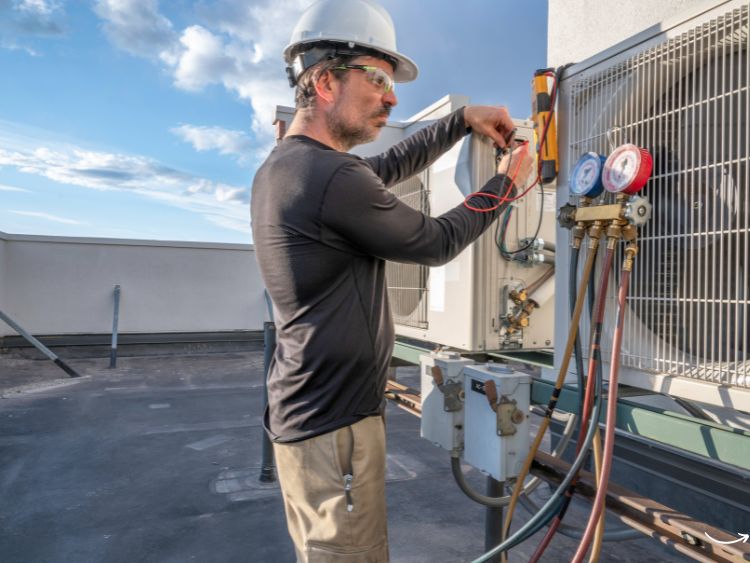If you’re in the HVAC (Heating, Ventilation, and Air Conditioning) industry, you know that having the right tools can make or break a job. Whether you’re installing a new system, performing routine maintenance, or tackling emergency repairs, the tools you use are crucial. So, what are the must-have HVAC tools that every technician needs? Let’s dive in and explore the essential tools that will ensure you get the job done right, every time.
Why Quality HVAC Tools Matter
When it comes to HVAC work, the importance of quality tools cannot be overstated. High-quality tools not only enhance efficiency but also ensure safety and accuracy. Think about it: a poorly calibrated gauge or a flimsy wrench can lead to mistakes that might cost you or your client dearly. Investing in top-notch tools is an investment in your professionalism and reliability.
Basic Hand Tools
Every HVAC technician needs a solid foundation of basic hand tools. These are the bread and butter of the trade:
- Screwdrivers: Both flathead and Phillips screwdrivers are indispensable.
- Pliers: Needle-nose, channel-lock, and linesman pliers cover a range of needs.
- Wrenches: Adjustable wrenches, pipe wrenches, and hex key sets are essential.
- Hammers: A good claw hammer and a rubber mallet are must-haves.
- Tape Measure: Precision in measurements is key in HVAC installations and repairs.
Specialty HVAC Tools
Beyond the basics, there are specialized tools that cater specifically to HVAC tasks:
Manifold Gauge Set
A manifold gauge set is critical for reading pressure in refrigeration systems. It helps you diagnose issues with the system’s refrigerant levels and overall performance.
Vacuum Pump
Used in conjunction with a manifold gauge set, a vacuum pump is essential for removing air and moisture from the refrigerant lines. This step is crucial before charging the system with refrigerant.
Refrigerant Scale
To accurately measure the amount of refrigerant being added or removed, a refrigerant scale is a must. Precision is vital in maintaining system efficiency and compliance with regulations.
Leak Detector
Finding leaks in the system is made easier with an electronic leak detector. These devices can pinpoint even the smallest leaks, ensuring the system operates efficiently and safely.
Advanced Diagnostic Tools
As HVAC systems become more complex, advanced diagnostic tools have become indispensable:
Multimeter
A multimeter measures voltage, current, and resistance, helping diagnose electrical issues in HVAC systems. It’s a versatile tool that no technician should be without.
Thermometer and Hygrometer
These tools measure temperature and humidity levels, respectively. They help in assessing the environment and ensuring that the HVAC system is maintaining optimal conditions.
Infrared Camera
An infrared camera helps in identifying hot and cold spots, diagnosing insulation issues, and locating leaks. This high-tech tool can save time and improve accuracy in troubleshooting.
Power Tools
Power tools can significantly speed up HVAC work and increase efficiency:
- Cordless Drill: A cordless drill with a variety of bits is essential for installing hardware and fasteners.
- Sawzall (Reciprocating Saw): Ideal for cutting through metal, PVC, and other materials encountered during HVAC installations.
- Portable Work Light: A good work light ensures you can see what you’re doing, even in poorly lit areas.
HVAC Software Tools
In today’s digital age, software tools are just as important as physical tools:
HVAC Design Software
Software like Wrightsoft or Elite Software helps design HVAC systems with precision, ensuring the right load calculations and system configurations.
Diagnostic Apps
Many modern HVAC tools connect to apps on your smartphone or tablet, providing real-time diagnostics and troubleshooting help.
Safety Gear
Safety should always be a priority in HVAC work. Here are some essential safety items:
- Gloves: Protect your hands from cuts, burns, and chemicals.
- Safety Glasses: Shield your eyes from debris and harmful substances.
- Ear Protection: Reduce the risk of hearing damage from loud equipment.
- Respirator: Protects against inhaling harmful particles and fumes.
FAQs about HVAC Tools
What are the most important HVAC tools to start with?
The most important tools include a set of screwdrivers, pliers, wrenches, a manifold gauge set, a multimeter, and safety gear. These basics will cover most of your initial needs.
How do I maintain my HVAC tools?
Regular maintenance includes cleaning, calibration, and proper storage. Keeping tools in good condition ensures longevity and reliability.
Are there any must-have digital tools for HVAC technicians?
Yes, HVAC design software and diagnostic apps are incredibly useful. They help in planning, troubleshooting, and improving efficiency.
What’s the best way to store HVAC tools?
Invest in a good tool bag or toolbox with organized compartments. Keeping your tools organized makes them easier to find and prevents damage.
Conclusion
Having the right HVAC tools is essential for any technician aiming for success in the field. From basic hand tools to advanced diagnostic equipment, each tool plays a crucial role in ensuring jobs are done safely, efficiently, and correctly. Investing in high-quality tools and keeping them well-maintained not only boosts your professional reputation but also ensures the longevity and reliability of the systems you work on. So gear up, and make sure your toolkit is complete—you never know when the next big job will come your way!
By understanding and utilizing the essential HVAC tools outlined in this guide, you’ll be well-equipped to handle any challenge that comes your way. Remember, the right tools are not just an asset; they’re a testament to your commitment to excellence in the HVAC industry.







